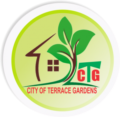Epsom salt is a natural mineral that is made from hydrated magnesium sulfate. It was discovered in an underground spring in the town of Epsom in England in the early 1600s. It has since been used for treating many conditions in humans, animals, and plants. Chemically, it has 10% magnesium and 13% sulfur. These are nutrients that are essential to many plants for the roles they play in growth and development.
What Does Epsom Salt Do for plants?
The potential benefit of Epsom salt on plants is a widely debated topic among gardeners. Some gardeners believe using Epsom salts on their plants is the reason for their impressive growth, while others claim Epsom salts are not only useless at improving plant health, but that adding it to plants can actually be detrimental to the condition of the soil. Here, we’ll look at various points of view and evidence to determine which plants, if any, would benefit from supplements of Epsom salts. On the other hand, many believe that there seem to be good, relevant reasons for using Epsom salts for plants. Epsom salt helps improve flower blooming and enhances a plant’s green color. It can even help plants grow bushier.
Epsom salt is made up of hydrated magnesium sulfate (magnesium and sulfur), which is important to healthy plant growth.
Improves Nutrient Uptake
Epsom salt contains magnesium, which is an essential nutrient that helps a plant perform some of its essential functions. One of these is that magnesium increases a plant’s ability to absorb other nutrients, such as nitrogen and phosphorus, without which it would struggle to thrive. Epsom salt is, therefore, not only useful at supplying the plant with magnesium but in doing so, it is also helpful in ensuring the plant is able to take in the optimum levels of other vital nutrients from the soil.
Makes Plants Greener
Magnesium, one of the main elements of Epsom salt, is said to make plants greener. It does this because magnesium is useful in the plants’ creation of chlorophyll, which is what determines a plant’s leaf color, and ultimately results in the plant’s foliage appearing lusher. Chlorophyll is also important for the plant to photosynthesize, a process that enables the plant to make food and energy for itself.

Provides Micronutrients
Epsom salts contain two micronutrients that are useful for the plant, and these are magnesium and sulfur. Some gardeners argue that these micronutrients are not vitally important for the plant, while others claim that they make all the difference in a plant’s successful growth. In fact, the type of plant you have will determine whether these micronutrients are essential or not.
Many leafy vegetable crops, or some types of beans, will perform brilliantly even with very low magnesium levels; therefore, Epsom salts would not make any noticeable difference to the growth of these plants. Roses, peppers, and tomato plants require high levels of magnesium to thrive, so it is these plants that would benefit from the micronutrients contained within Epsom salts.
When Not to Use Epsom Salts in the Garden
Epsom salts are known to be beneficial to some plants in some situations. Primarily, roses, tomatoes, and peppers are the key plants that can take advantage of the magnesium levels contained in Epsom salts. However, there are some situations in which Epsom salts should not be used. These are as follows.
How Much Epsom Salt For Plants
There are many different ways to use Epsom salts in the garden, and the ratio you can use will differ depending on the application method, and the plants you are treating.
For a general Epsom salt supplement that can be used in the garden and on houseplants, use two tablespoons of Epsom salt per Litre of water, and use this to water your plants once each month in between regular watering. For roses, work in half a cup of Epsom salts around the base of the plant to encourage new growth and flowering.
When initially planting roses or any other plant, it is recommended that you add one spoon of Epsom salts to the hole before lowering the plant in. while trees can be treated with Epsom salts around three times each year.
How to Apply Epsom Salt to Plants

Epsom salts in the garden are most commonly used as a foliar spray. You simply mix in the required amount of Epsom salt with water and spray it on the leaves of a plant. Ideally, do this in springtime just as new leaves are emerging, and again after blooming. Epsom salts can also be added to water and used as a soil drench, watering the plant at the soil level. When planting, you can add Epsom salts directly to the soil, or work it into the soil without diluting it in water first.
